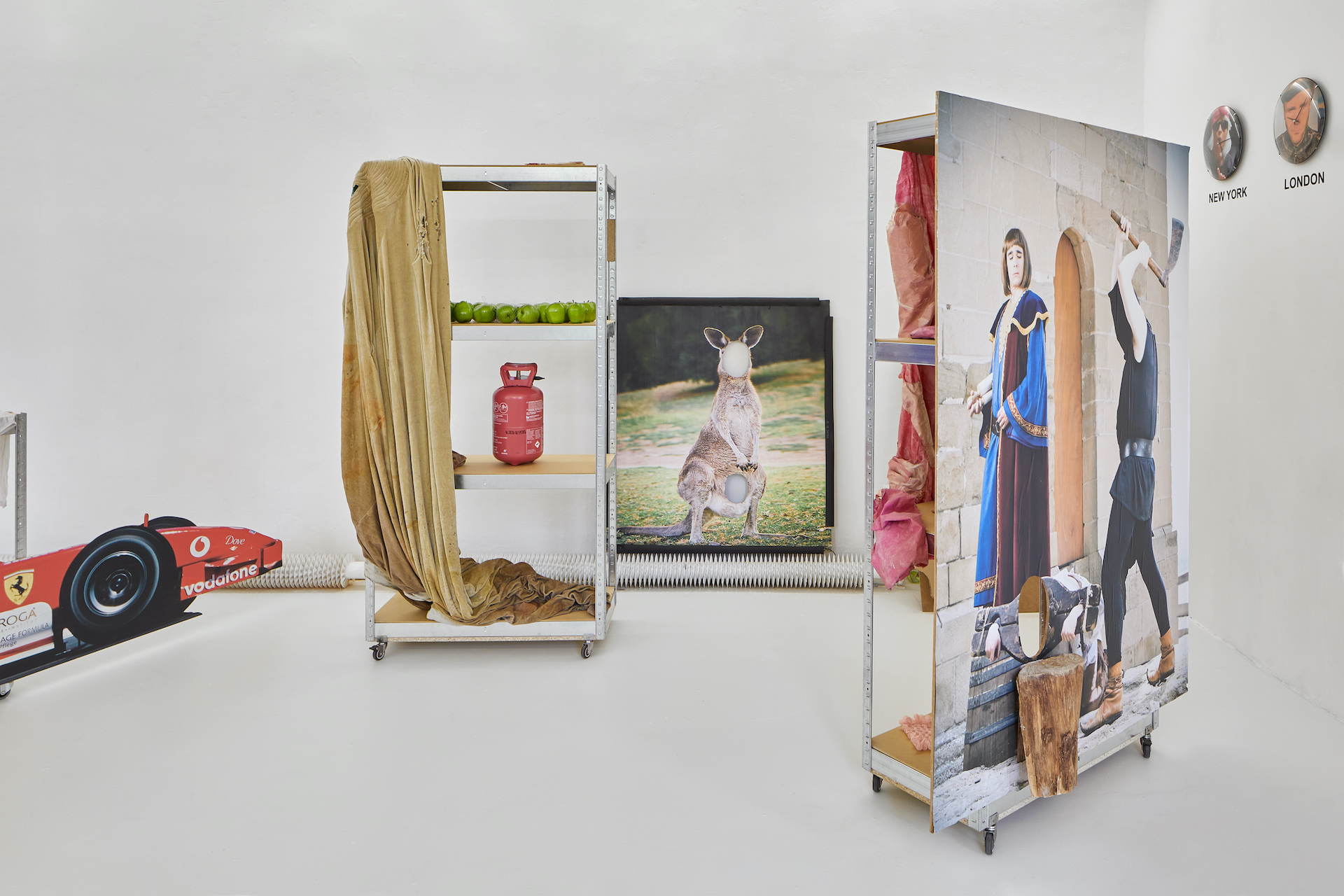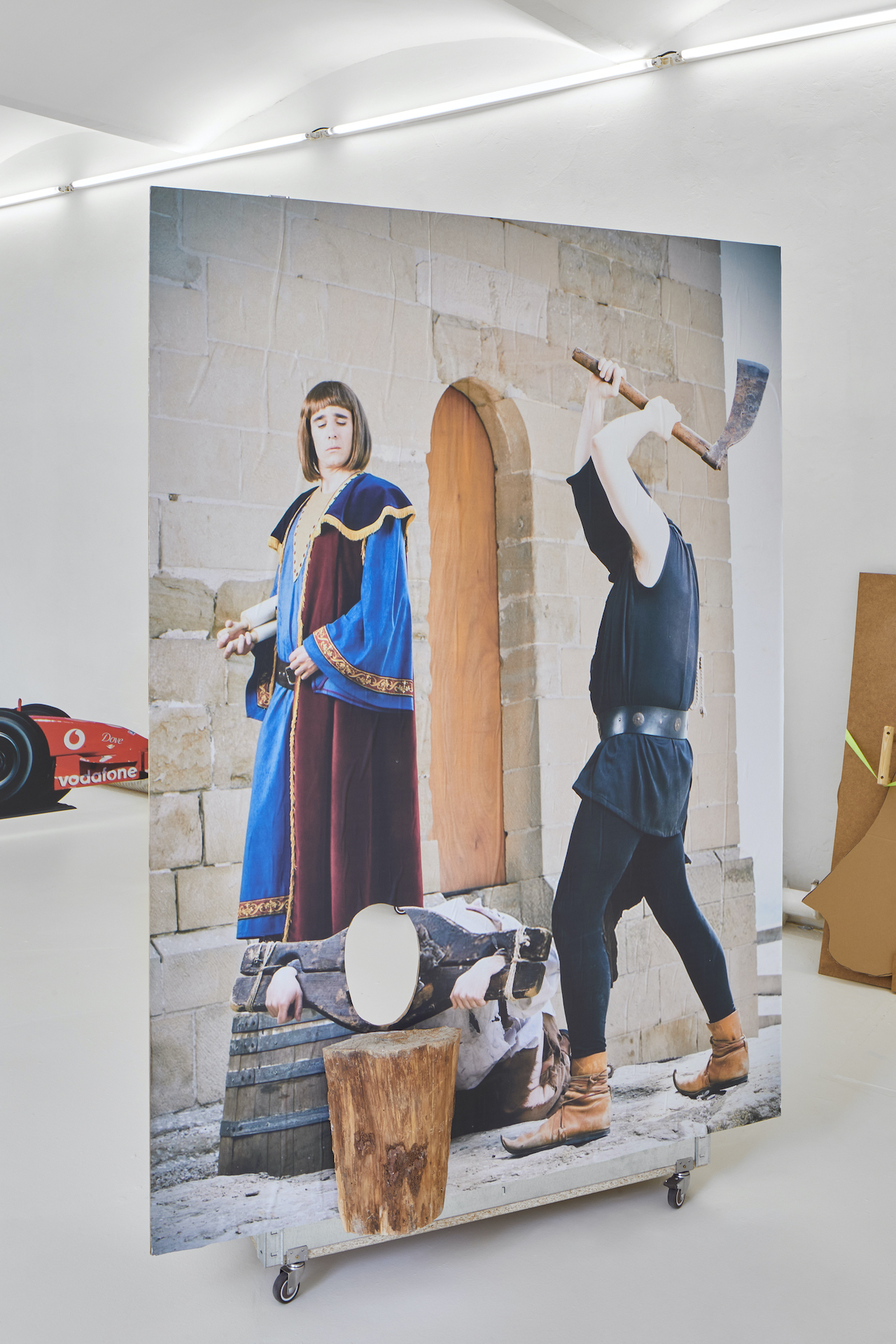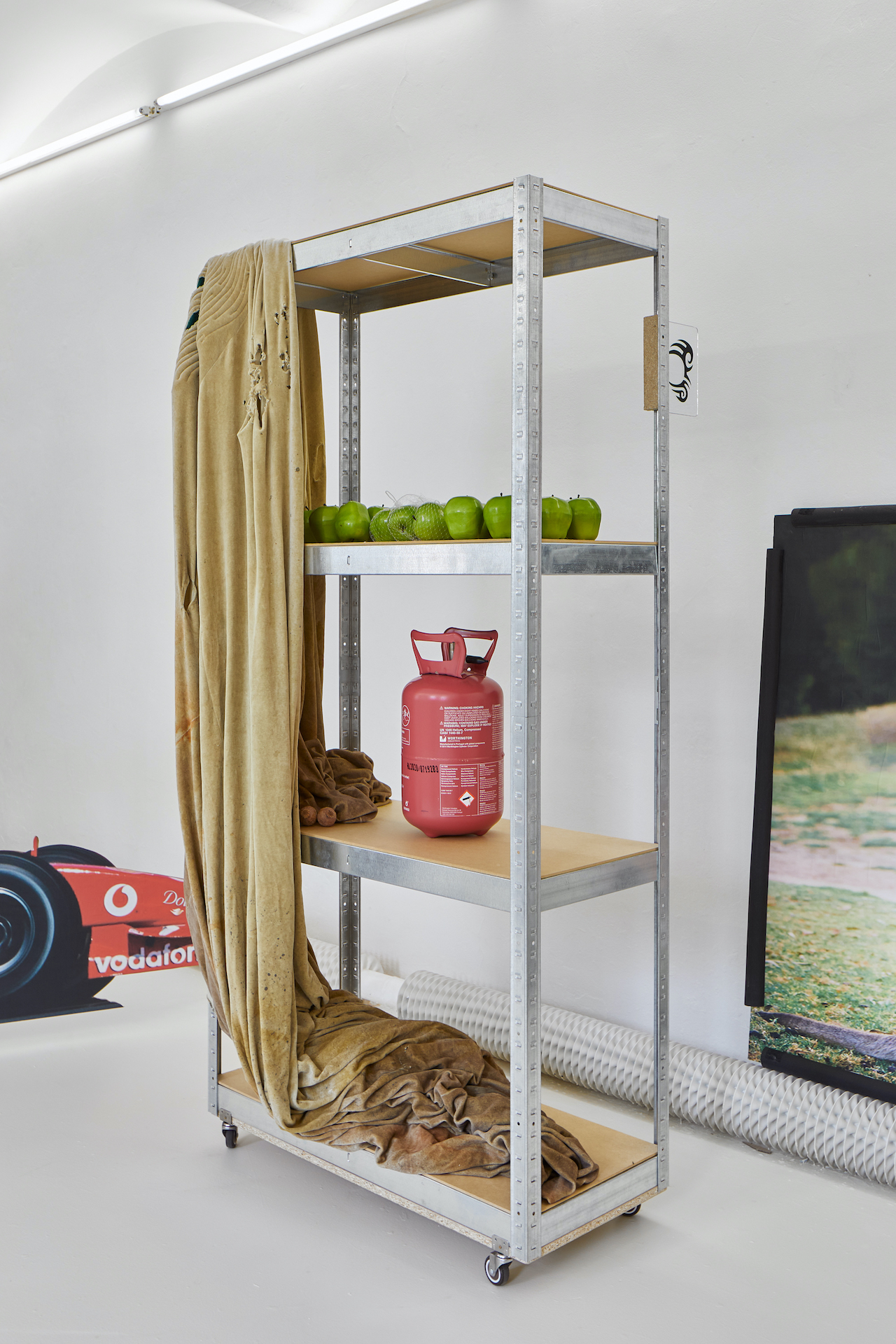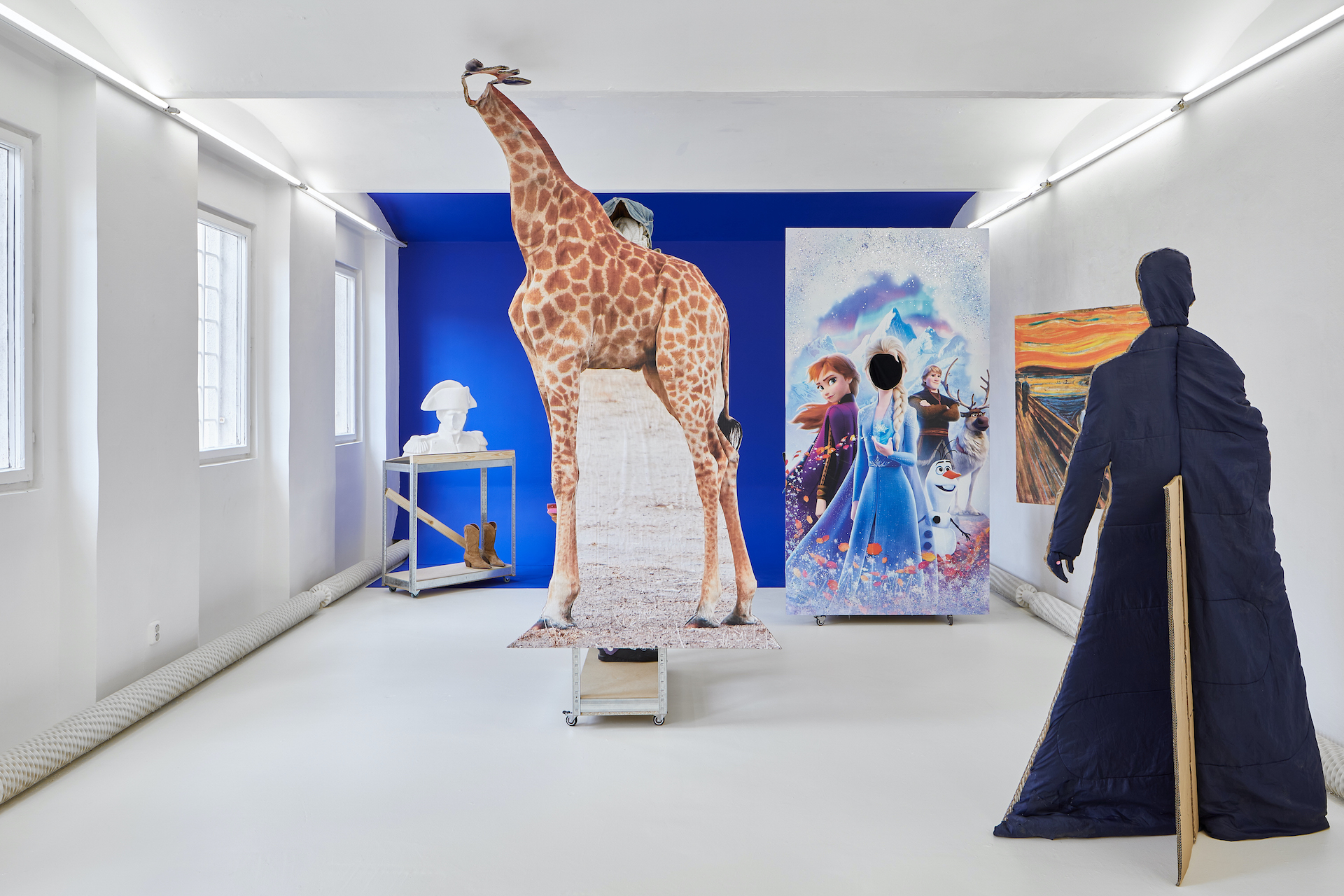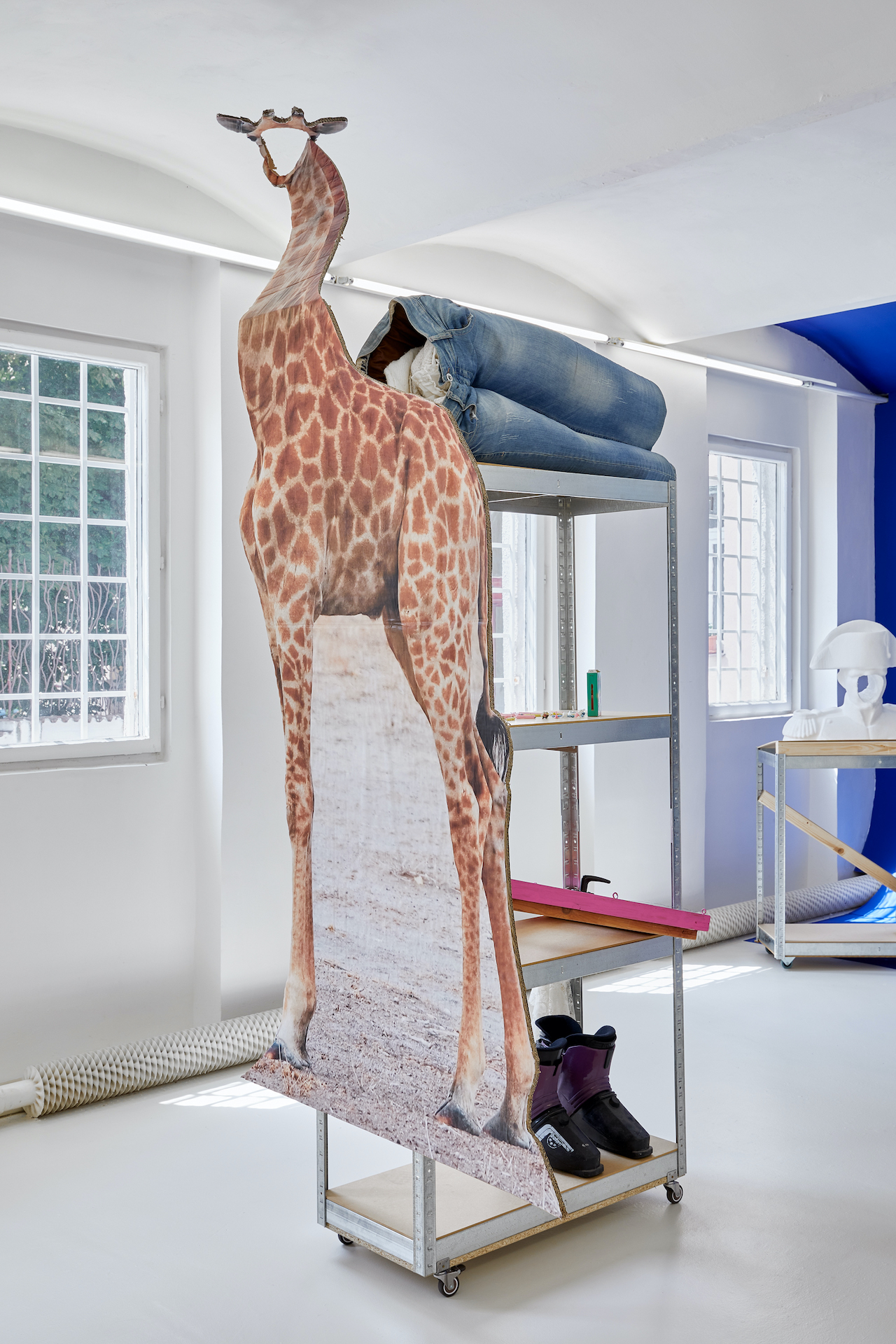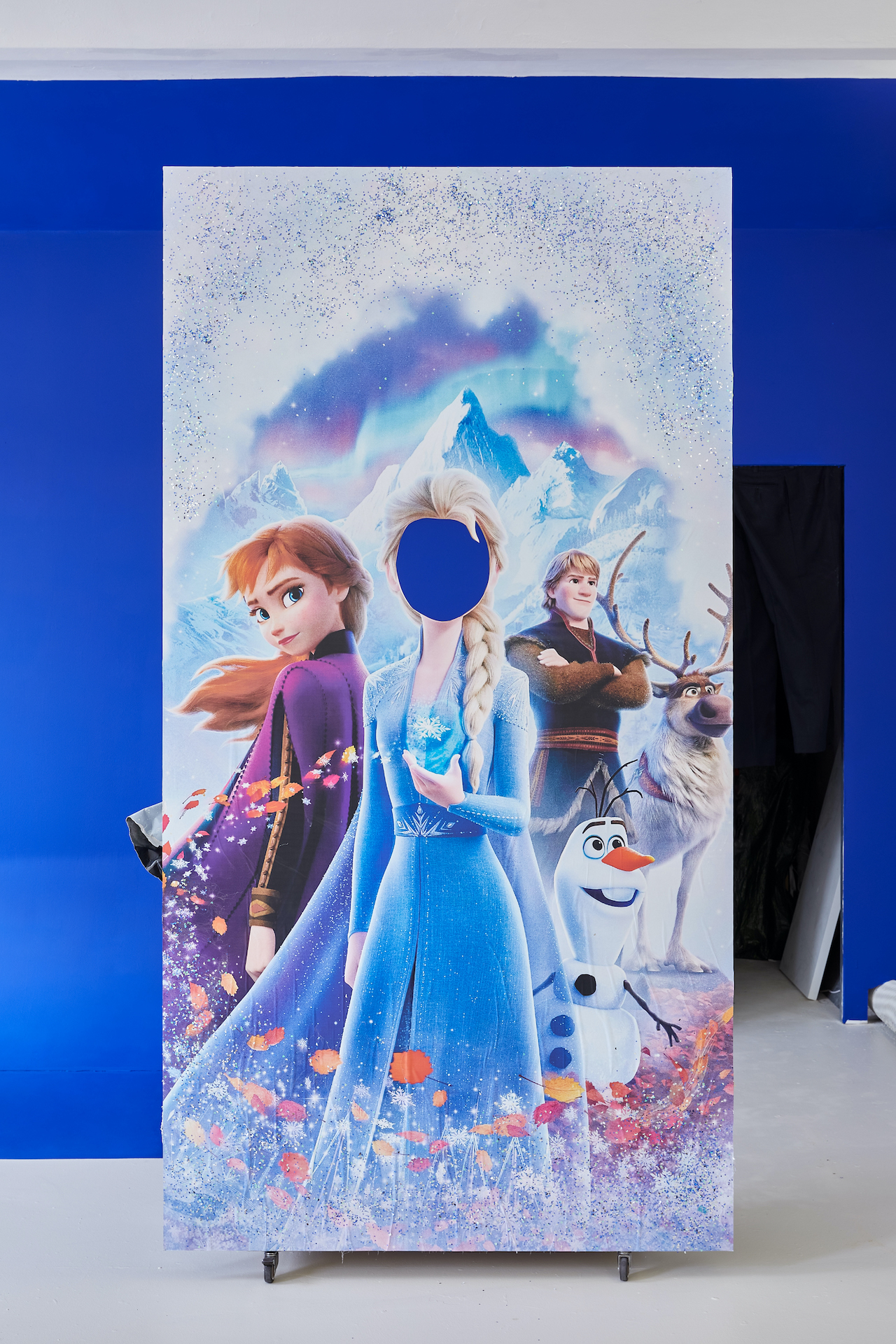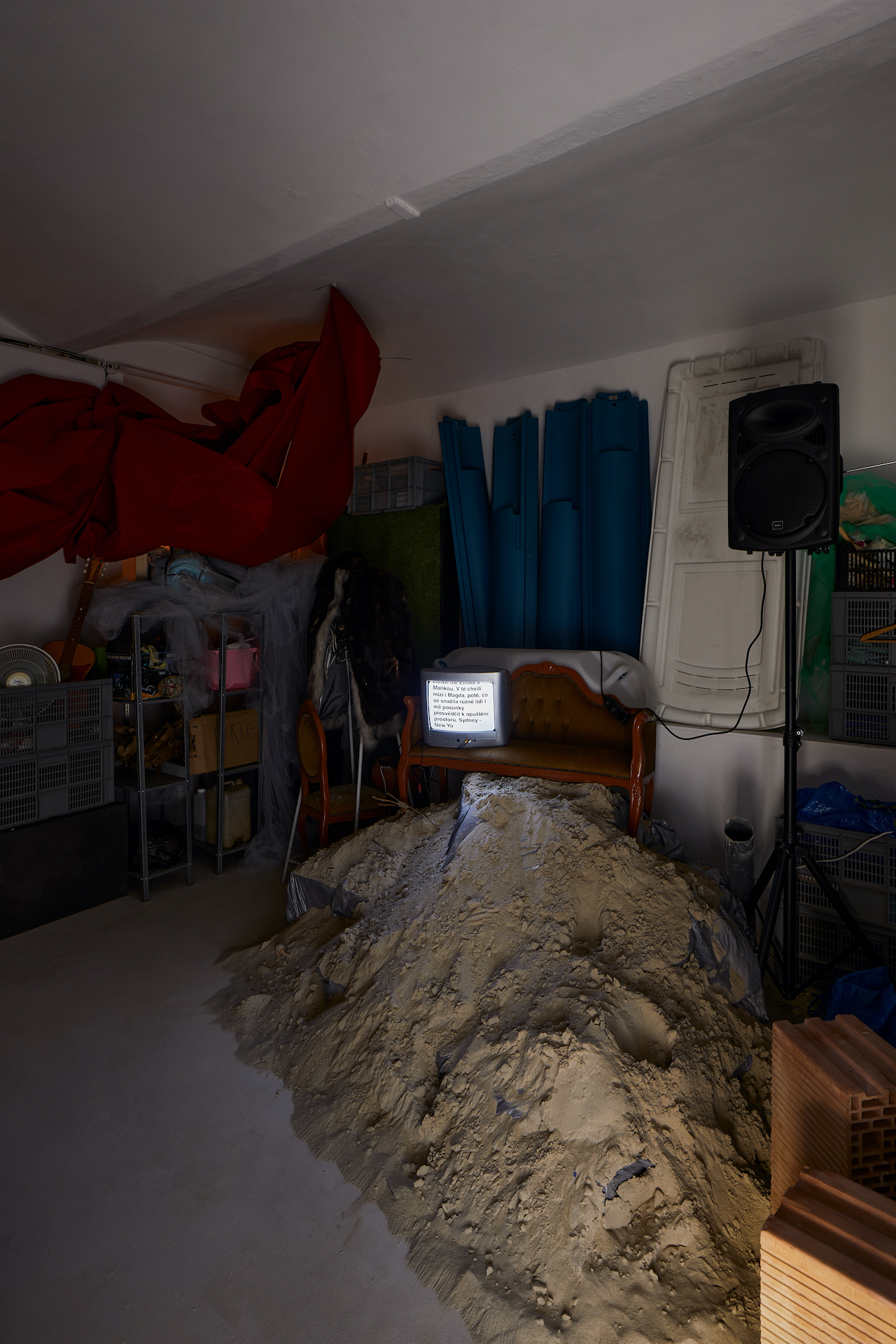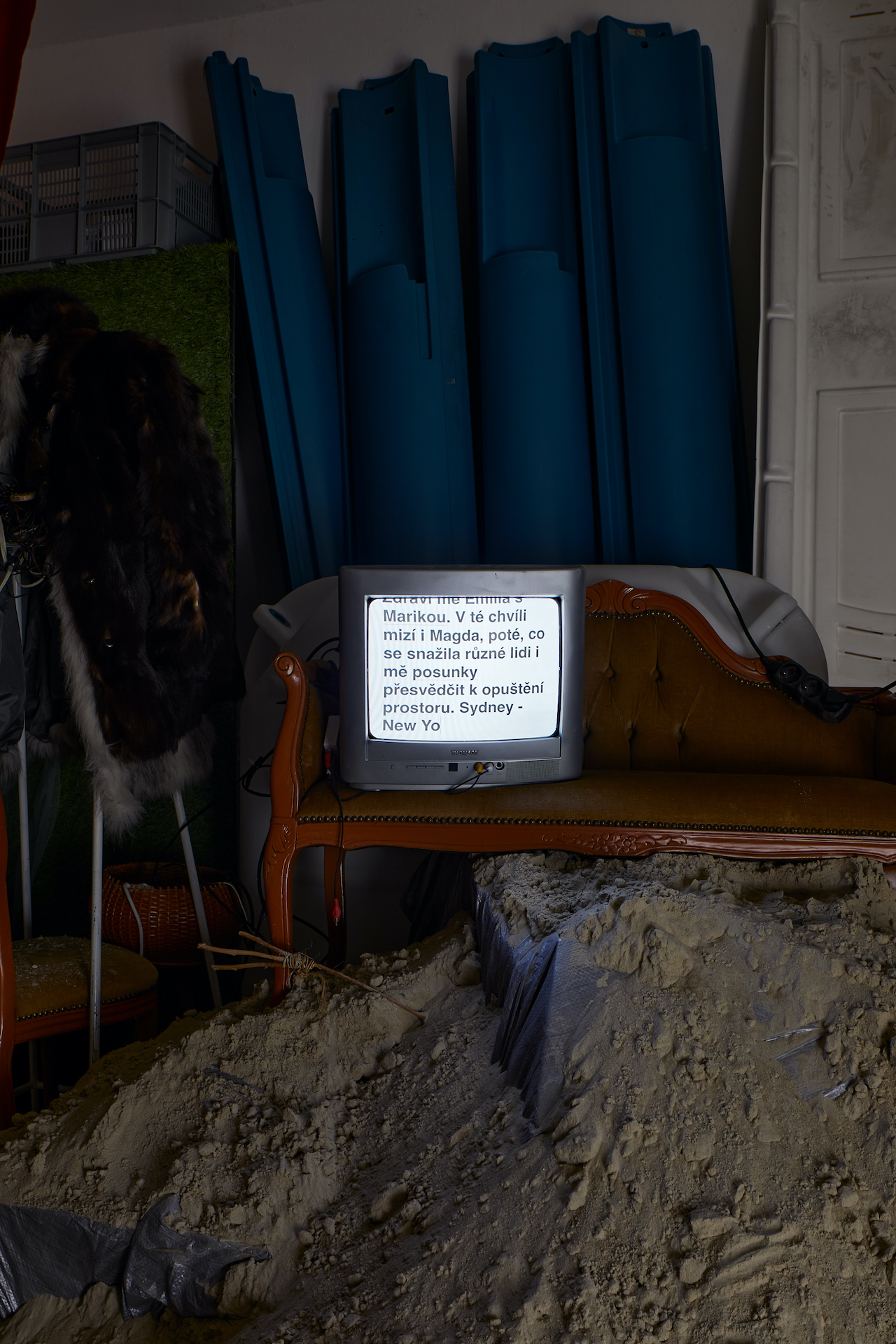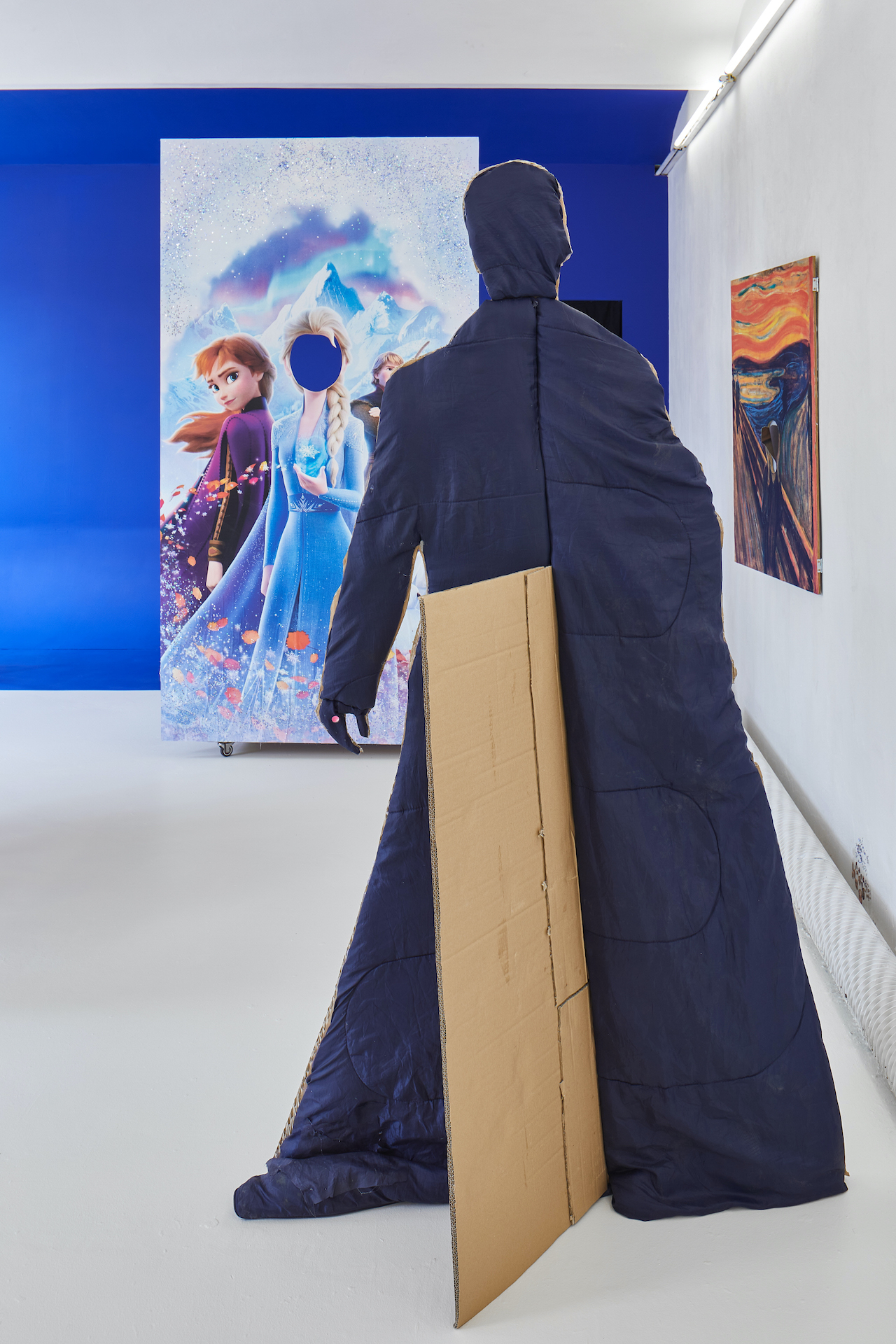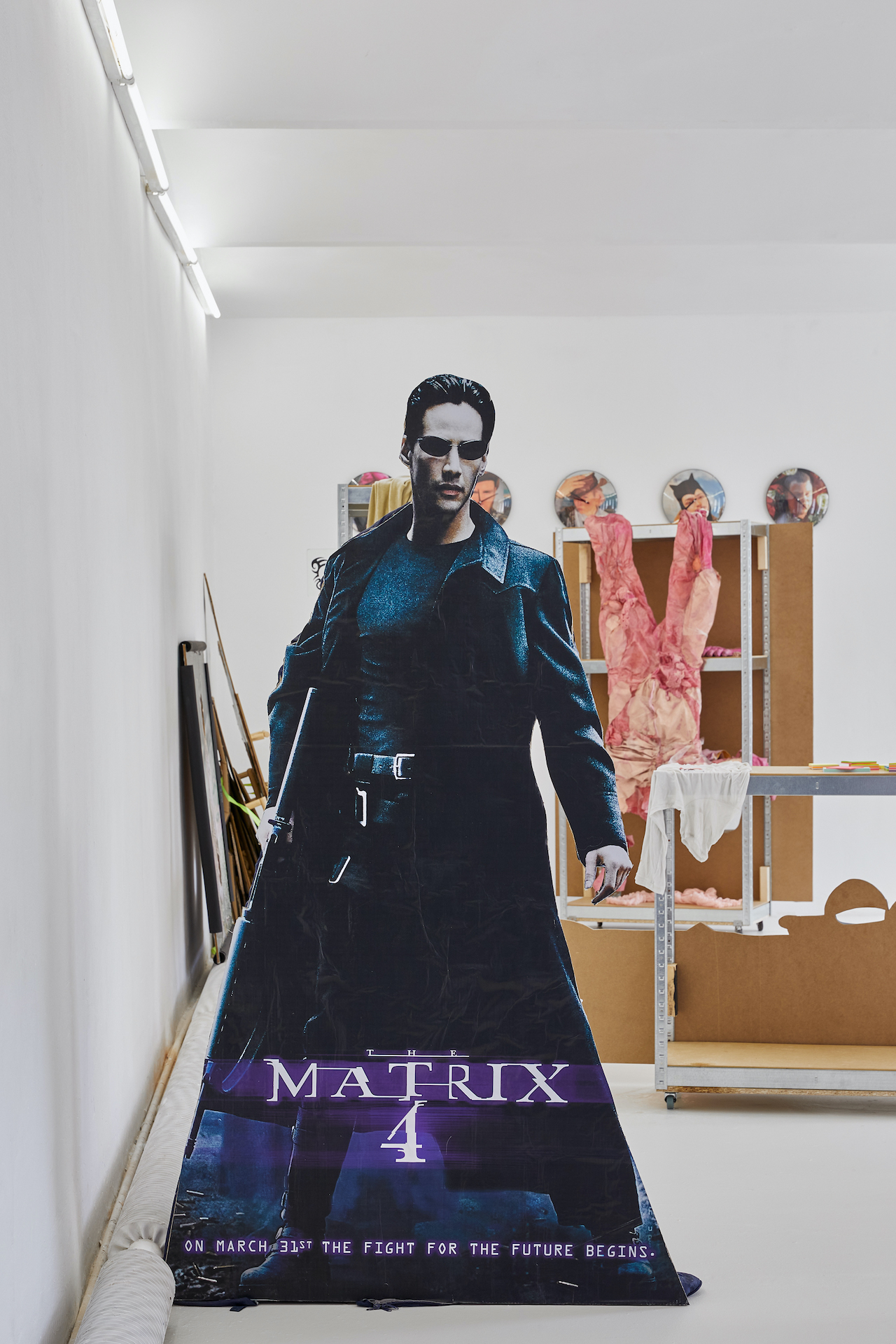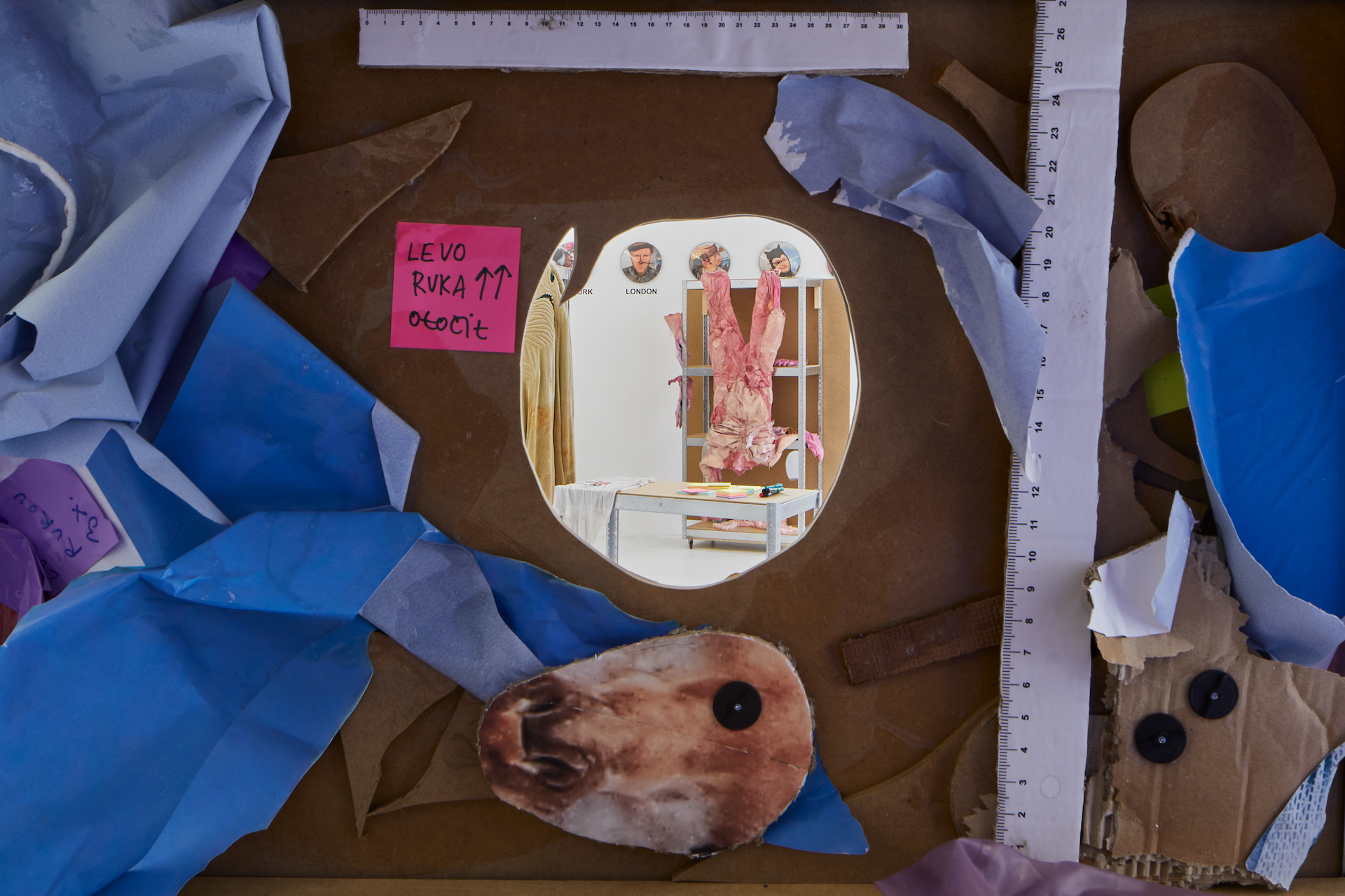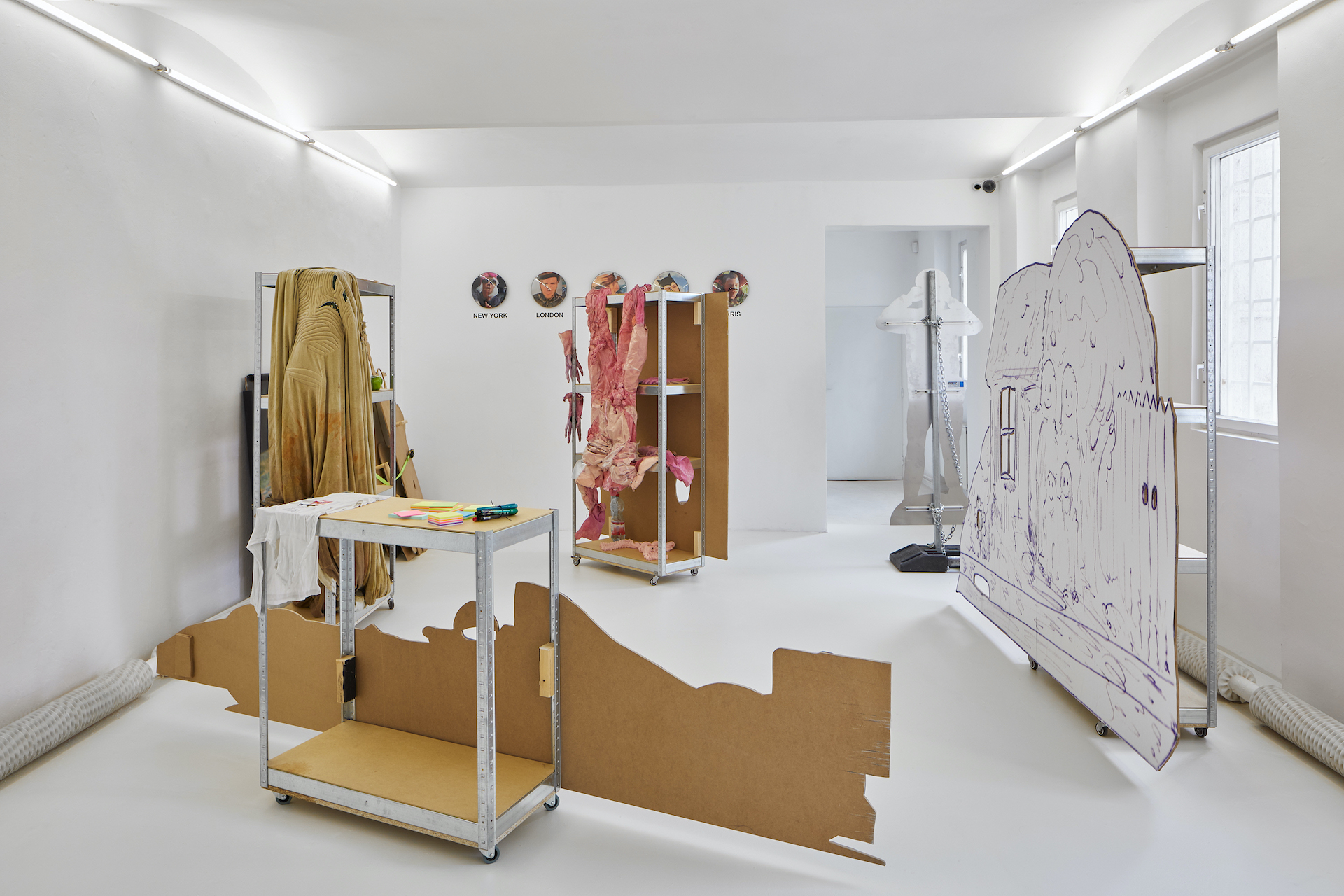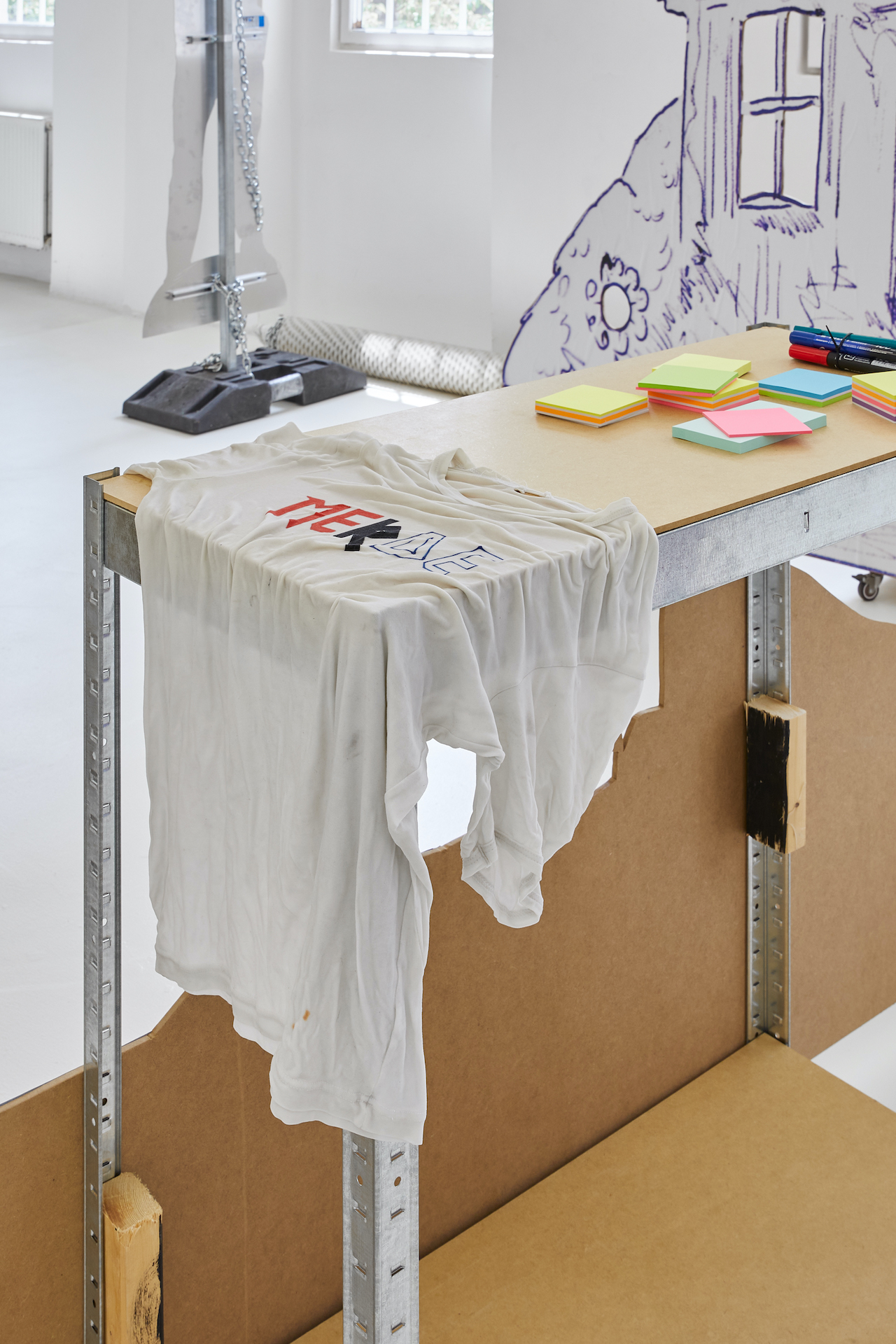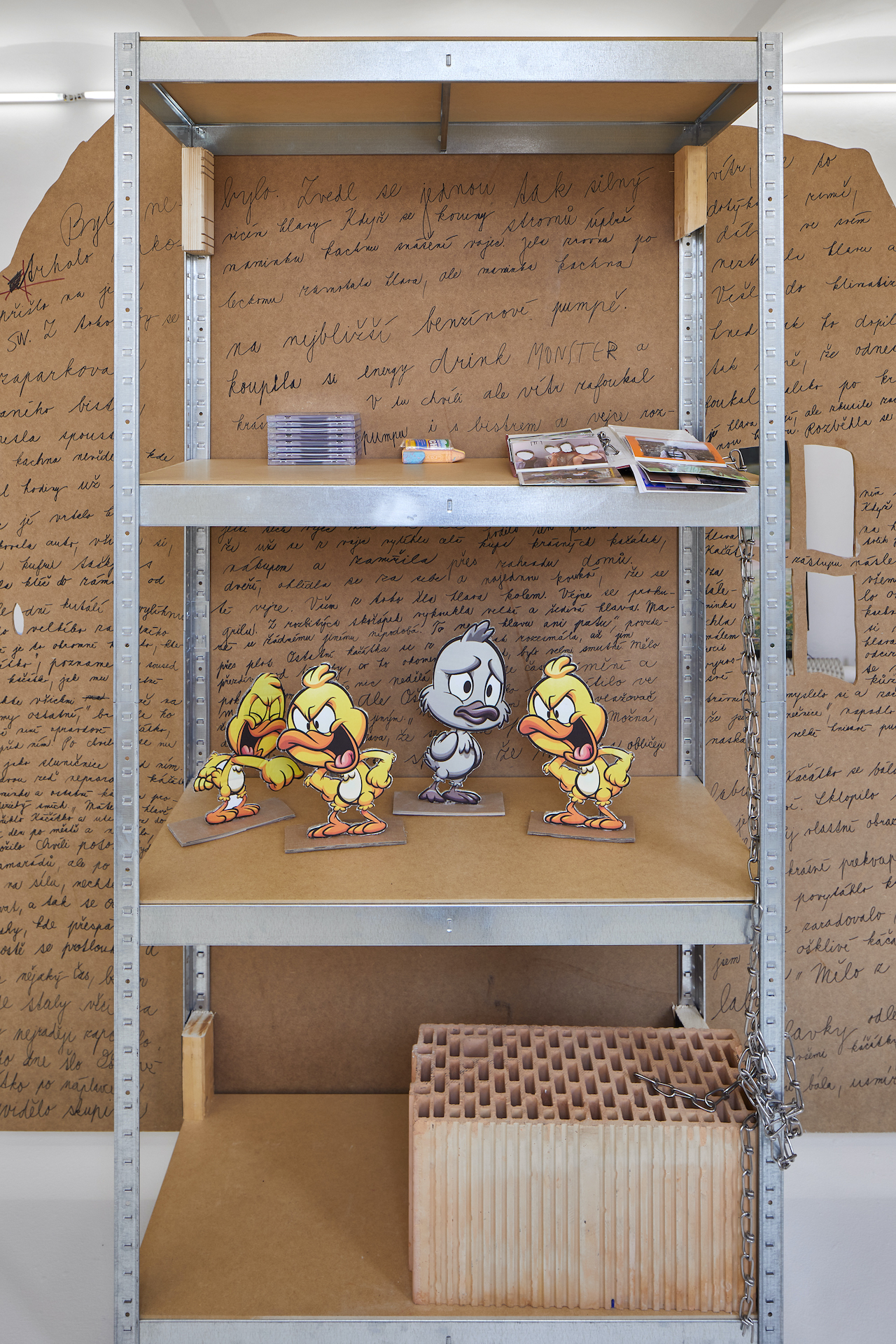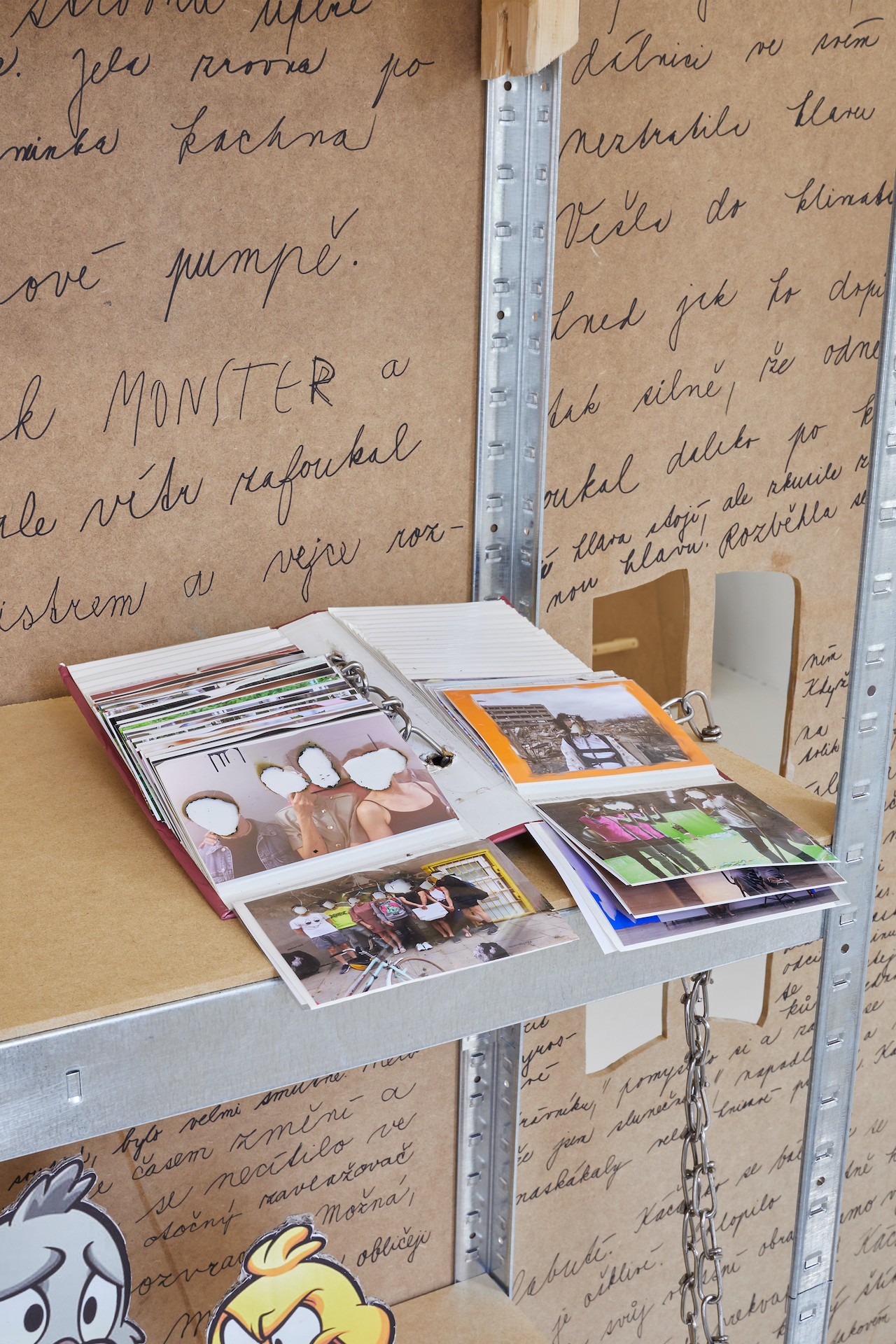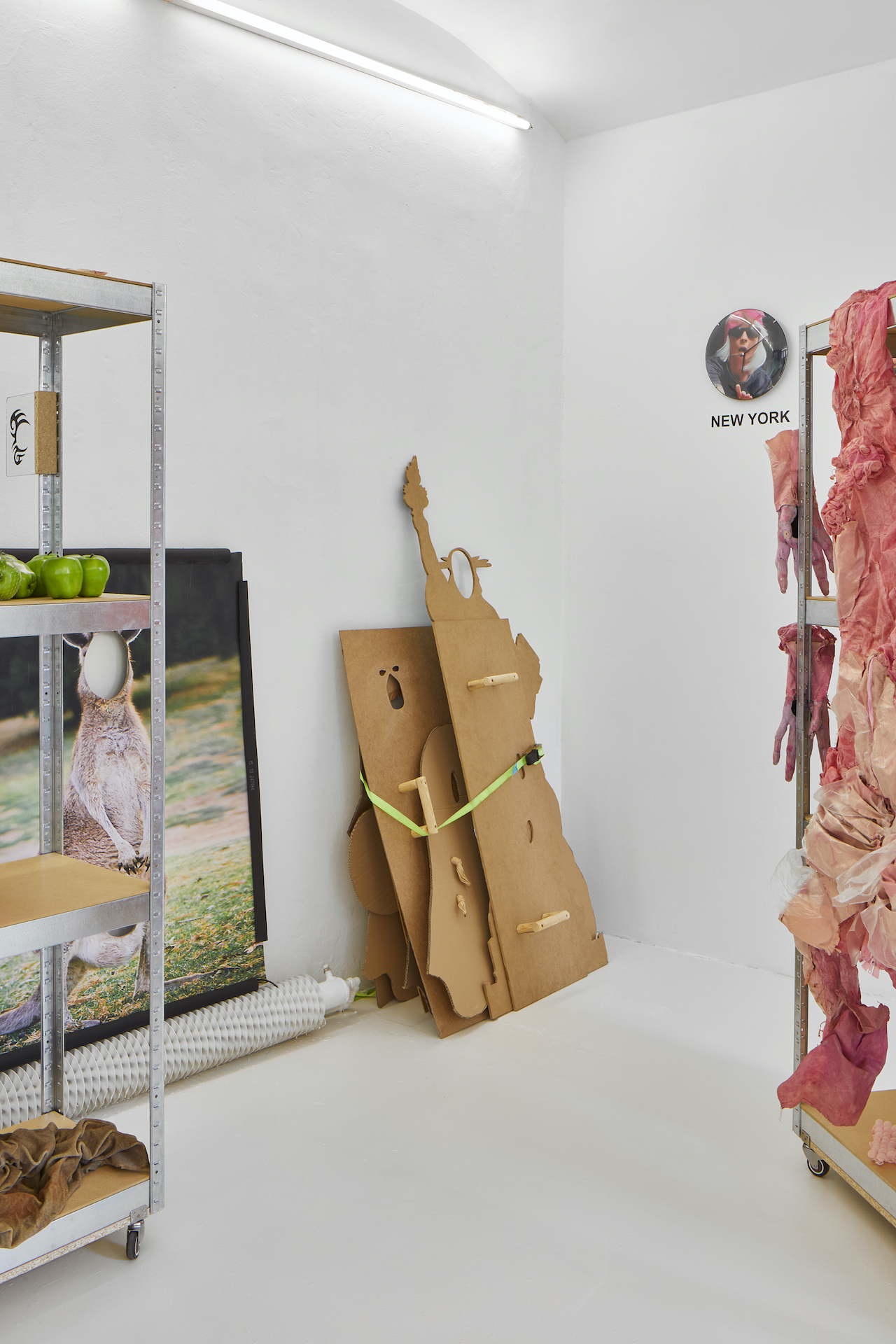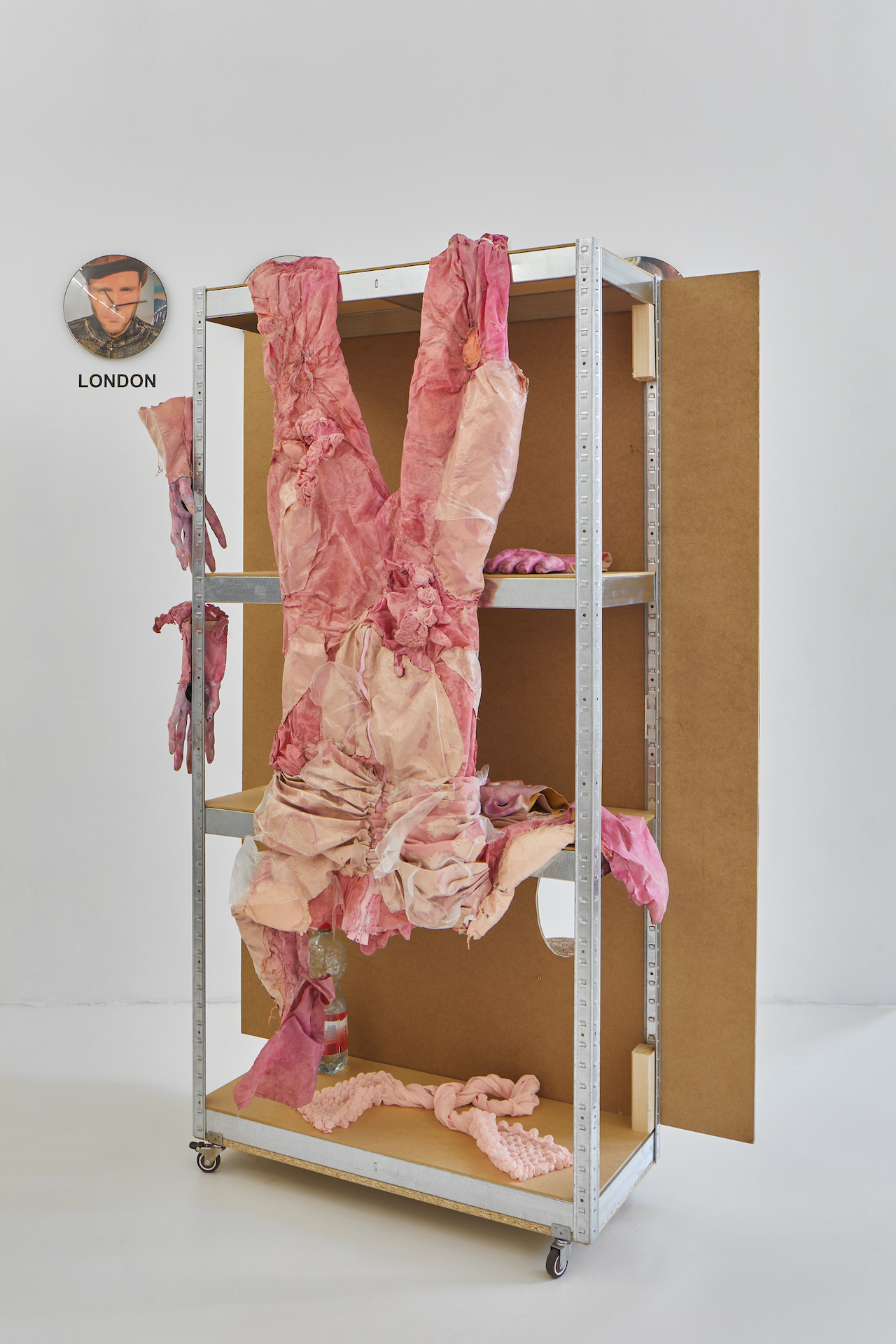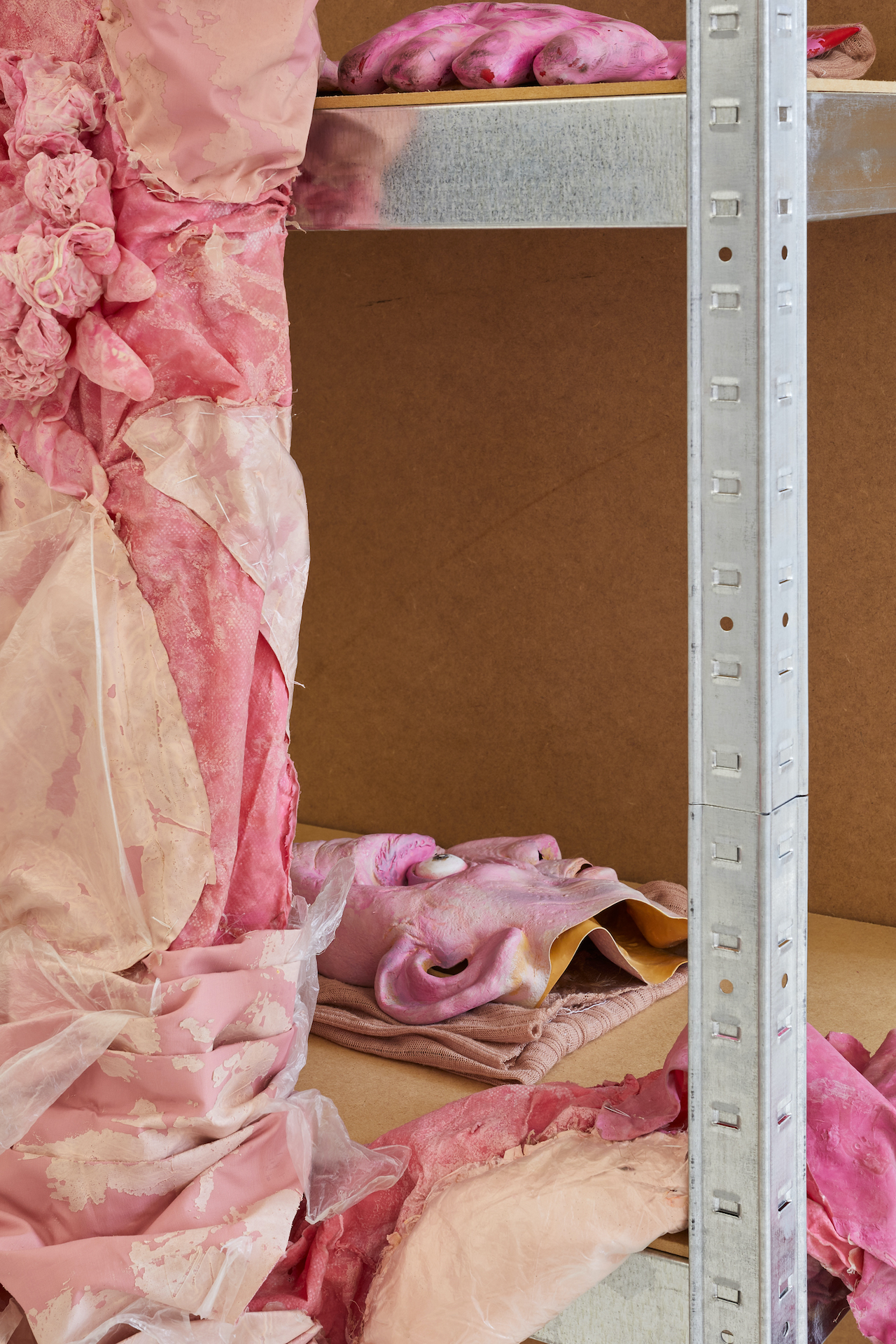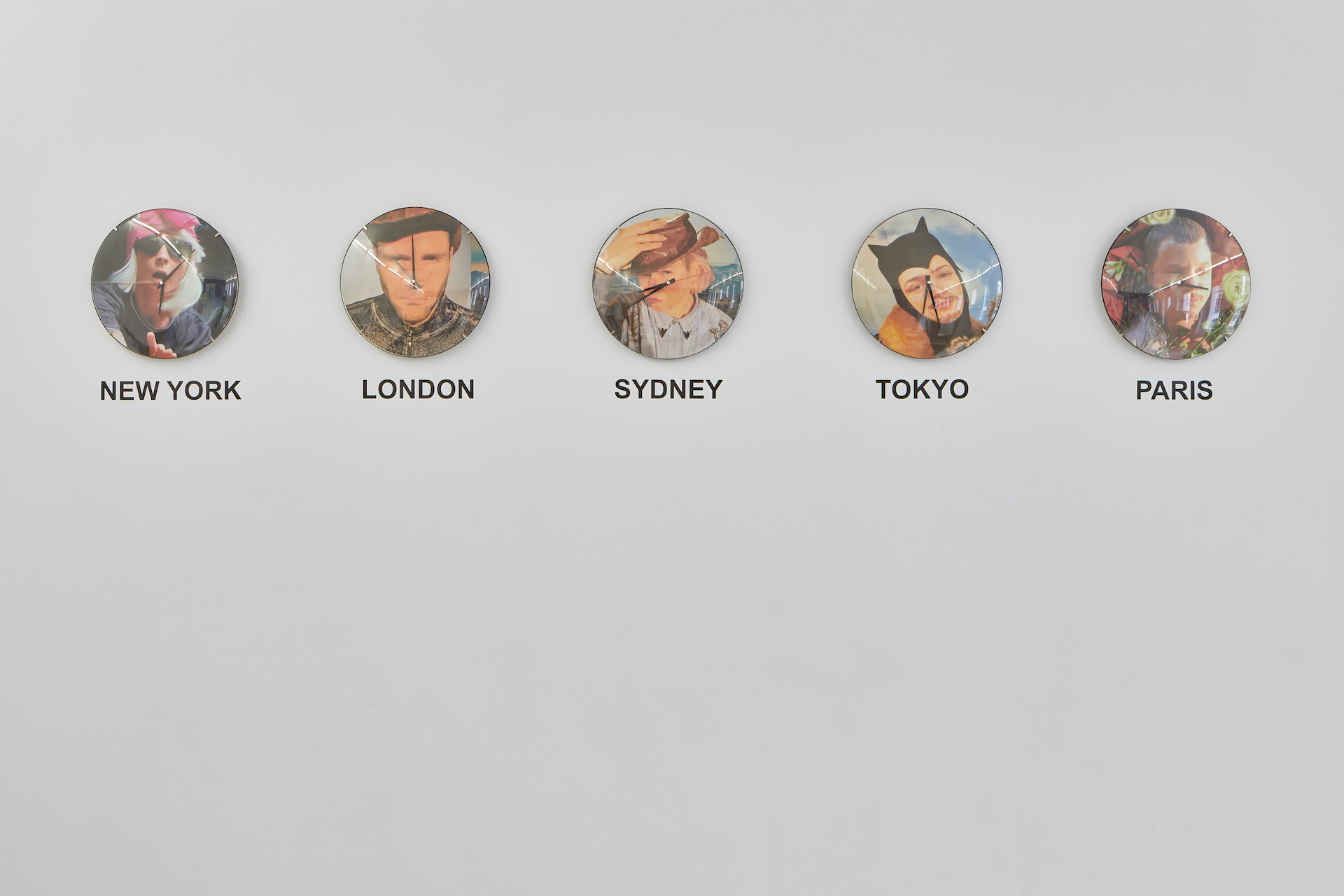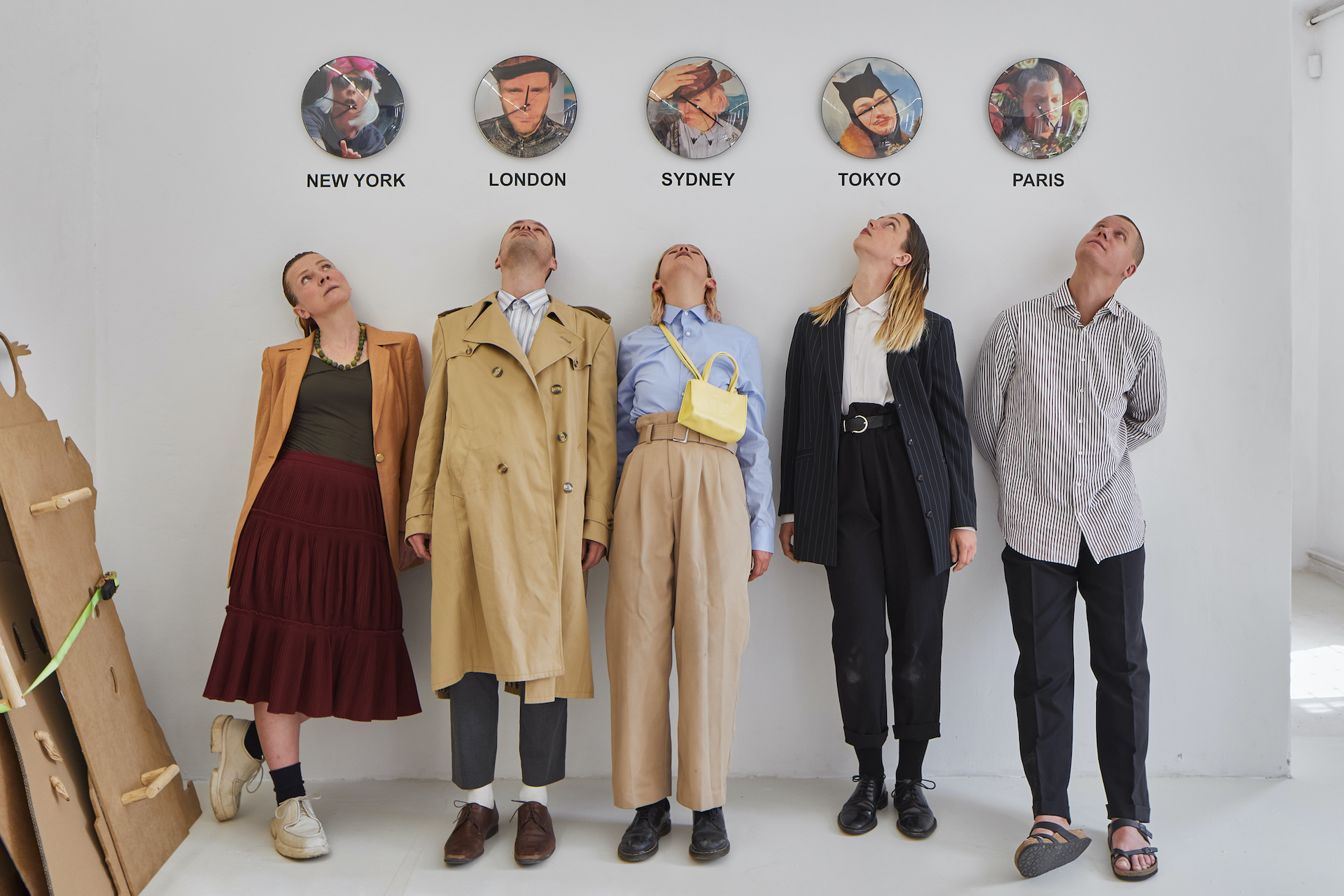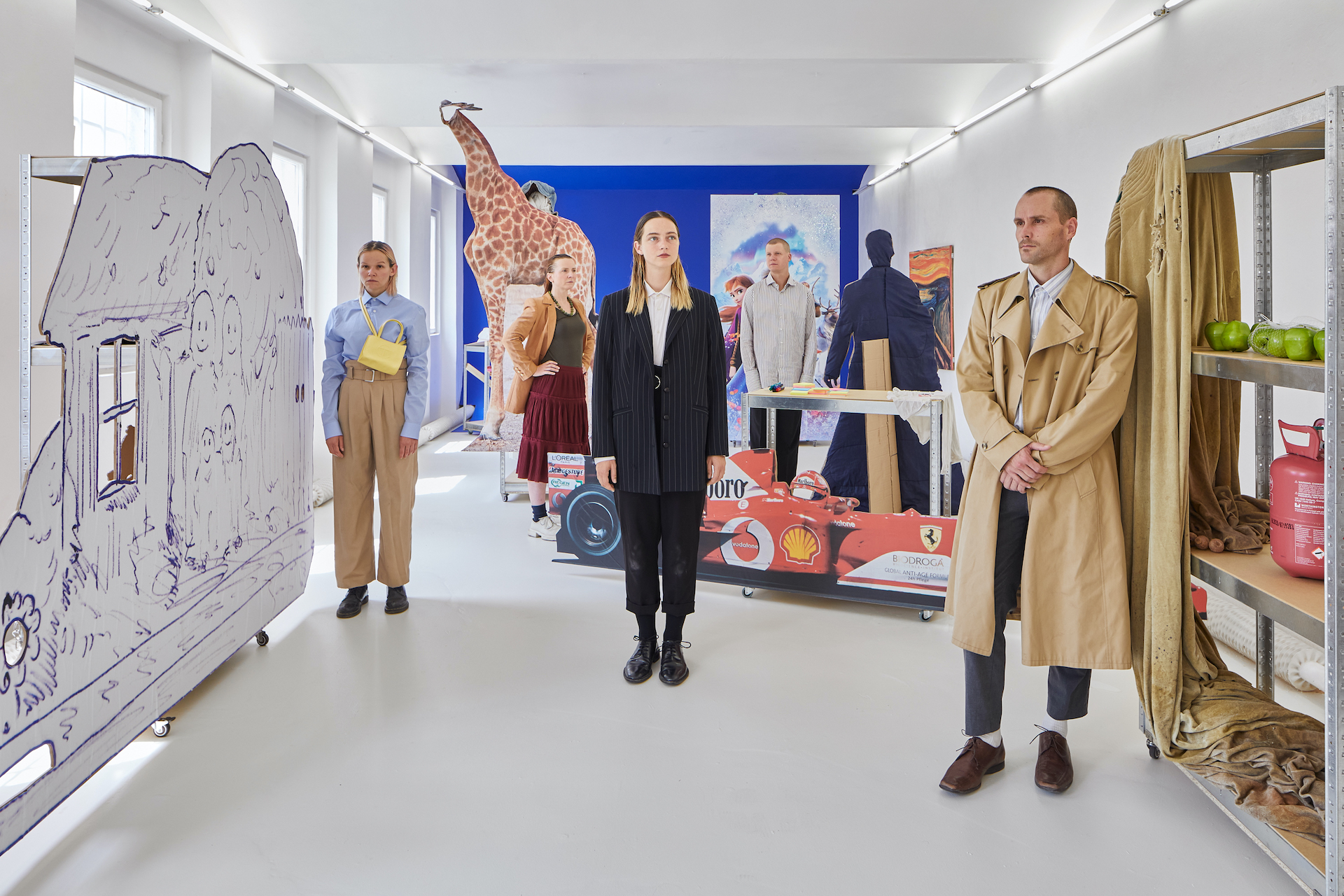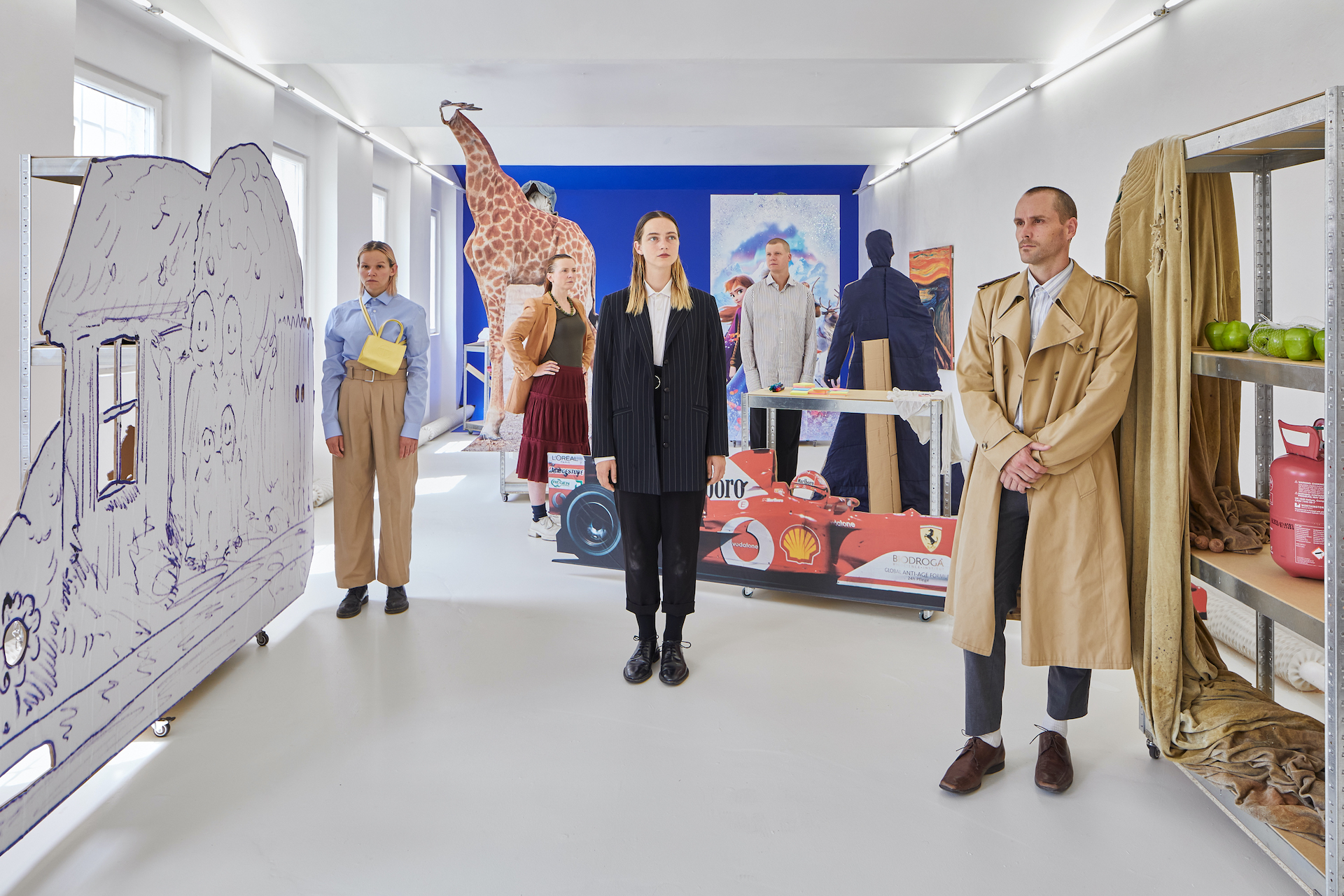Artist: D’epog
Title: Cheeeeeese
Venue: Centre for Contemporary Art FUTURA, Prague
Curator: Lukas Hofmann
Photo: Jan Kolský
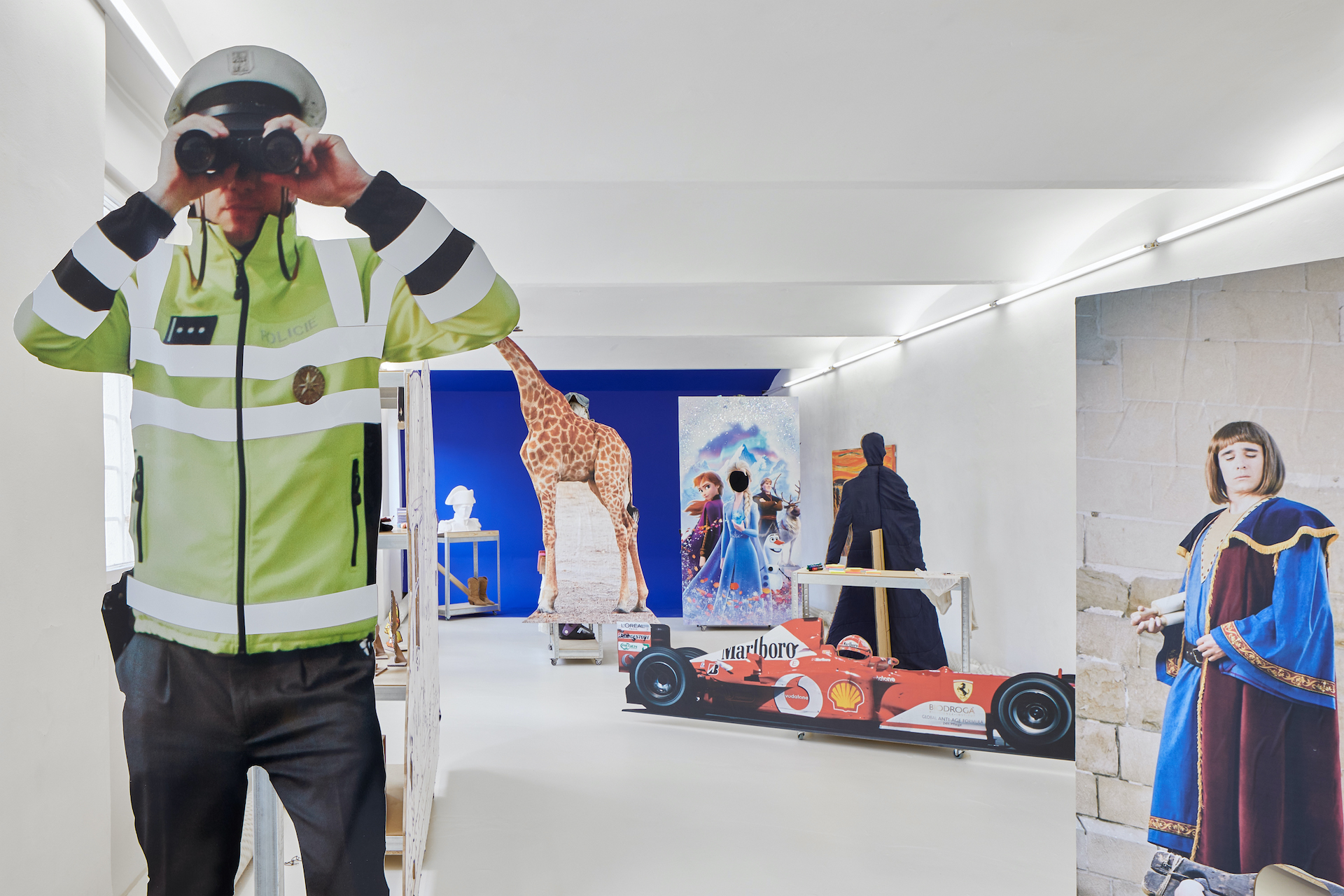
Eleven years ago, twenty people applied to partake in a proposition which then had outlines of experimental theatre. A director then made a decision to construct an autonomous world with its own internal rules and since then, all the group’s activities have led to affirming its existence within that constructed framework which at times attempts to colonise our reality as well. Since then, different factions have emerged out of it, and only three of those performers survived the drill (and two more have joined). A few years ago, the resulting shape renounced dubbing itself ‘theatre’ and will nowadays call itself a ‘platform’ – a pompous, yet appropriate word, given the processual and communitive manner of its operation. Whether one attends its scripted plays, annual summer workshop, or is allowed to attend a rehearsal, they become a part of a lengthy underlying process of constant reinvention and experimentation. The group has no permanent basecamp to present its work, and either way, you will much more often find it within various gallery walls, rather than in a theatre.
The group works methodically, strategically. At its rehearsals, the director howls sharp imperatives and performers simply freeze or slow their movement and listen. She is uncompromising in harnessing their concentration, focus, tempo and rhythm, corporal memory, and knows when to play a legato and a staccato on their bodily instrument. Throughout the years, a strict method has been devised and codified. The actor’s experience informs their behaviour while performing and the heterotopia they momentarily create. There’s scarcely any story involved, the dramatic arc is abolished. Whenever an error occurs during rehearsals, life bursts out, and the group fixates and institutes it into its repertoire, because a mistake affirms humanity. The level of intensity at its performances is usually so high you may think this time might be their last – exhaustion is a huge part of its emancipatory potential. Production-based tasks are all shared among the members, whether those involve sweeping the floor, assemblings the props, transporting objects, maintaining the website – responsibility towards the group holds a central position.
The series of distinct performative works presented in this gallery falls in the so-called curated realities category. This paratheatrical format allows performers to act out and be their honest selves at the same time, exuding attentive sensitivity to one’s surroundings – we could perhaps simply call it having presence. There’s no goal decided in advance, although in the two to four hours of spontaneity, many goals are reached. Interpretation is key to everyone’s autonomy in the process, both the actors’ and the spectator’s, and the director does not try to interfere with it. As the spectator moves through the space, trying to soak in as much action as possible, they realise there are precious slits, interpretative levels and colourful beads of energy they will necessarily miss out on. The totality of the group‘s work is impossible to take in as the actors spread their attention in different directions, but to miss out also seems to be the point.
Throughout the years, its members have developed athletic bodies which may provoke jealousy in those of us whose spines are going to fall off for being sedentary sacks of organs. The beauty of these human workhorses lies in just how quick the reaction of one to another is – the synchronicity becomes a type of intelligence. Every action calls for a reaction, but the latency has become almost null, so the system truly responds to itself at all times, without the temporarily switched-off software of being civilised. After all, to truly improvise is incredibly difficult, and you have to condition your mind to all kinds of entropy to achieve such freedom.
For the first time in its history the group has created an exhibition – an officialized and static gallery formation which is supposed to work even without their live presence. In the pursuit to holistically embrace their practice, there has been a decision made to move objects that played a major role in its past activities to the gallery and thus arrange a peculiar retrospective. The display is divided into two parts: the larger one, an empire of light, is filled with printed photo-board surfaces of various material qualities. They are nailed onto the half-empty ‘curated’ racks with a few chosen props.
By utilising relatively inexpensive mock-ups, the group maximizes the number of objects in the exhibition space in a way that creates a segmented, wrinkled landscape. Its flatness then acts as an illustration of modern-day universities calcified into kitsch due to their persistence in the cultural mainstream. So a flattened male protagonist of a film stares at an empty hole – our head – in a female protagonist of another film, there is a red Formula behind his back and in the distance we can see an outline of the world’s most famous statue – the intelligibility of the references is almost disturbingly immediate. It seems as if a group needed to put on display a kind of perverted Best of, browse through it for the one last time and figure it out before dumping it in the dustbin of history.
All the room’s surfaces are covered in holes – these absences are ready to fulfill the possibility of our metamorphosis – for us to fill them, to become their tourists, to momentarily shift our perspective, or to straight up settle in their tableau vivant. Cut-outs are often found on non-conventional or hard to reach places, some of the boards have both of their sides printed (which enables us to find ourselves in a human mother by looking through a kangaroo pouch). We can participate in the events happening within a happy nuclear family scrawled on a photo board pretty much anywhere – we can stare out of the window or the cellar; squint down from the fence, or lend our face to a flower – the only thing not granted to us, is to participate in the harmonious family itself.
There is a correlation between the photo board and the rack connected to it: a relationship between a two-dimensional surface and three-dimensional space. It seems like the board is a dust-jacket while the rack is a book’s content that provides the photo boards with the much needed physical support and, thanks to the wheels, mobility as well. It also gives them a shapeshifting quality, the possibility to change the space and its regularities, block it, make the ground under our feet move, or destroy it. The racks complete the registries of meanings of the attached photo boards by using the relics of the previous stagings of the group. A t-shirt lying on one of the racks is permanently wet with a performer’s sweat. The post-its next to it are waiting for foreheads. The pants are waiting for the non-human wearer. The question is, which of the possible potentialities will be used by the performers, and which won’t. (Also, whether the visitor dares to peruse the objects on display.)
At the back of the room, behind the never-ending background of the photographic bluescreen, there is a disorganized pile of bric-a-brac, brought there from the group’s fundus. There is a stenographic record of a previous performance running on a small TV, as just another way of recording, of a spontaneous level of interpretation. The choice of the retrospective transfer of the complete ‘personal’ archive as well as the work with the still artefacts, is a traditional choice of the art world. Nevertheless, artefacts are motionless agents, in comparison to them the group goes through a never-ending process of redefinition. To concentrate the objects of the past and to give them away in a ritualistic way might anticipate a new phase in the group’s evolution. (The metaphor of sticking one’s head in the sand was obviously a reason enough for the ensemble to bring in a ton of it.)
The exhibition will be activated by two more separate acts, with each of the beginnings semantically connected to the endings of the previous performative instances. At the first one, the ensemble was settling in. At the second performance, during the exhibition opening, we encounter the negotiation of the group members’ own physicality with the flatness and the potential of the viewpoint provided by the exhibition. In the final act, the cumulation of objects and meanings intersects, and a de(con)structive transformation from maximality to emptiness takes place.
The signs of wear and activity in the space will add up and increase. Scratches, notes scribbled on pieces of paper, sole marks and smudges will remain the witnesses of the performative use of the space. Another question is, whether the silhouette of a policeman absurdly patrolling the very entrance will survive the threat of its deconstruction unscathed, now, when the ensemble has tied a heavy metal chain to it. It has, however, already been covered in fiery fingerprints. We can only speculate, whether they serve as an embrace providing the feeling of safety, or whether they originate in an act of passion.

